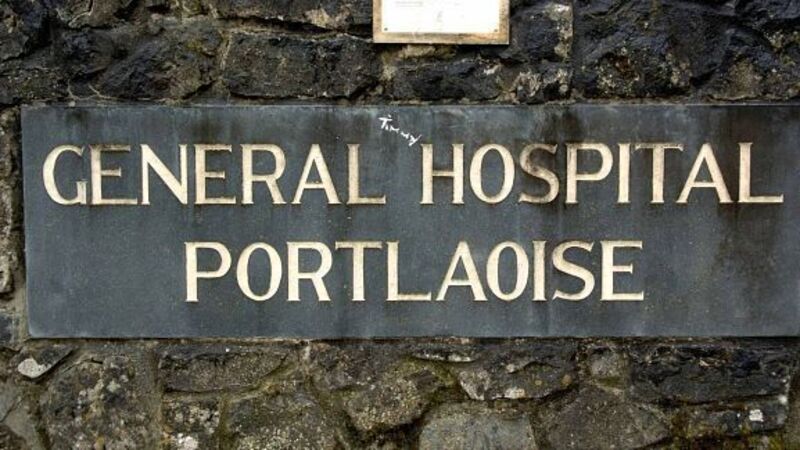Communication is first casualty of a medical disaster — this needs to stop

Portlaoise General Hospital’s communication with the newly-bereaved parents of dead babies is just the latest in a steady drumbeat of failure by medical professionals. It is the latest, but repeats, with dreary similarity, the physical and verbal offences of previous incidents.
Thirty years ago, when I made an educational video to help staff in maternity hospitals cope with the communications exigencies posed by stillbirth and perinatal death, the most upsetting on-screen witnesses was a man who, having done his best to comfort his wife on the loss of their newborn, ducked into a sluice room to weep in private, only to find himself facing his dead son, abandoned, bloody, naked, in a sink.
We like to believe ourselves to have become more insightful and sensitive in the ensuing three decades, but — in practice — are we? In the Portlaoise situation, one mother, Shauna Keyes, described her dead baby, Joshua, as having been squashed after death into a too-small box, before being presented to her. The report of the Department of Health’s Chief Medical Officer, Dr Tony Holohan, acknowledges as one of its most distressing findings that dead babies were transported in the boot of a taxi.
The 30-year interval, in fact, has made no difference. Medical staff as recently as a couple of years ago handled the dead bodies of recently-born babies without care for what that handling conveyed to the parents of those babies. They just don’t seem to have understood that everything you do or don’t do, everything you say or don’t say, constitutes communication, and that when patients are going through a crisis within your hospital, they and those close to them have a hugely heightened acuity in the way they pick up direct and implied communication.
That heightened level of acuity means that every gesture, every move, every touch delivered to a dead infant says something to a watching parent. It speaks of gentleness and respect for this unique tiny being. Or it shouts contempt, harshness and a lack of respect that yellow-packs the dead child.
Again, it is important to stress that the physical handling of a dead baby may not come high up on the priority list of staff who are trained to meet the demands of the living. It is also important to stress that every hospital has staff at every level who manage the technical and communications aspects of their role superbly.
But the nub of the issue is the general lack of understanding of the importance of communication in such a situation and failure to comprehend the emotional processes which inevitably follow such a fatality.
When a life is unexpectedly lost in a hospital, it has a devastating effect, not just on the relatives (in the case of Portlaoise, the parents) but on the members of the medical team involved. They may feel frightened, disappointment or even ashamed. Unless they have been trained in advance of the actual experience, in a way that provides “stress-innoculation,” they may handle the situation badly. They may concentrate on process, not people. On ass-covering, not kindness. On form-filling, not listening.
Worse still, they may unconsciously protect themselves by withdrawing from or finding fault with the bereaved parents, as seems to have happened in Portlaoise, where bereaved mothers were put in rooms alongside other new mothers whose healthy babies were with them, and where, as one of them put it: “The attitude was basically, well, you can’t be upsetting the other mothers”.
In any situation, individuals react badly to criticism. In a situation involving a death where they may at least partly blame themselves and where emotions are high, to be criticised or questioned is experienced as an attack. One of the classic human defence mechanisms in that situation is to characterise the injured person, the victim, as an enemy.
It’s easy and natural for that portrayal to seep wider and be adopted by the entire team, so that in no time the lines are drawn up between us good guys who did our professional best, and that bad patient who was unreasonable long before anything bad happened... If, at this point, legal advisers come into the mix, medical staff may be warned not to apologise or give information, moving instinctive withdrawal on the part of the staff towards more systematic exclusion and — again as one of the Portlaoise women put it — “They didn’t treat me like a human.” The final step in the stand-off is where the patient decides the hospital staff are covering their ass and have no care for the people they’re supposed to care for, while, on the other side, the professionals agree that all the patient or the patients’ relatives want is money and who’d work in medicine any more, now it’s become so litigious?
The point is that this progress from shock to battle-readiness may be lamentable, but it is not inevitable. It can be prevented. It should be prevented. It is possible to train doctors, nurses and other medical professionals so that a new set of reflexes and a new checklist kick in when disaster strikes. The study of human behaviour in emergencies hammers home, again and again, that it is unrealistic to expect people to instinctively do everything right in such situations. Instinct isn’t enough. Repetitive experiential training is needed.
Internationally, healthcare produces evidence, year after year, decade after decade, that kindly, open and concerned communication in the aftermath of a medical disaster can be of enormous comfort to those at the sharp end of that disaster. Talk is not cheap in that scenario. It can be an emotional life-line, remembered by the bereaved or damaged patient. It can change not just the encounter but can greatly influence the aftermath of the medical mishap.
American research suggests that, even after a disaster involving professional culpability, patients are markedly less likely to sue if they have been decently communicated with throughout. And yet, down all the days, the powers-that-be within medicine examine and qualify nurses and doctors on technical expertise alone, paying lip-service to the importance of communication while they see it as something separate from the really serious stuff. Communication — as evidenced by what is rewarded during medical education — is seen as either a soft-and-fuzzy issue extraneous to the delivery of top-class healthcare or as important, but not right now, when we’re so busy and under-staffed. Nor does continuing professional development, to my knowledge, place any emphasis on the gaining of skills in delivering bad news or on the need to prove those skills.
The danger, now, is that corrective action arising out of Dr Holohan’s report will focus on gynaecological, prescribing and surgical procedures and ignore communication. Were that to happen, it would be regrettable. But grimly unsurprising.














